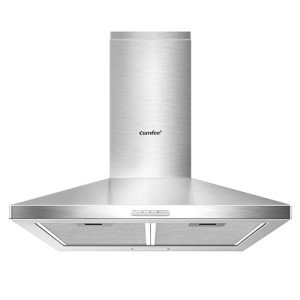
Cooker Extraction Hoods
Add a review FollowOverview
-
Founded Date March 18, 1951
-
Sectors Accountancy
-
Posted Jobs 0
-
Viewed 2
Company Description
Oven Hood Tools To Improve Your Daily Life Oven Hood Trick That Everyone Should Learn
The Importance of Oven Hoods in Modern Kitchens
When it comes to kitchen style, one of the most crucial yet frequently ignored features is the oven hood. An essential part of any cooking area, oven hoods serve not just as a trendy element but likewise supply essential performance that can drastically impact your cooking experience. This article will dive into the various aspects of oven hoods, including their types, advantages, maintenance, and FAQs.
What is an Oven Hood?
An oven hood, likewise called a range hood or vent hood, is a gadget set up above a stove or cooktop. Its primary function is to record smoke, steam, heat, grease, and odors generated during cooking, eventually enhancing air quality in the kitchen. Oven hoods can be vented to the outside or recirculated within the kitchen.
Types of Oven Hoods
Comprehending the available types of oven hoods is vital when selecting the best one for your kitchen. Below is a table summing up the various kinds of oven hoods and their qualities:
| Type | Description | Pros | Cons |
|---|---|---|---|
| Wall-Mounted | Set up against a wall, typically above the cooking surface. | Easy to set up; flexible styles. | May require ductwork. |
| Under-Cabinet | Fits beneath kitchen cabinets, providing a clean, structured appearance. | Space-saving; blends well. | Limited power and capacity. |
| Island | Suspended from the ceiling above an island cooktop. | Dramatic focal point; high airflow. | Frequently more pricey. |
| Downdraft | Integrates into the cooktop and increases when needed. | Minimalistic; no overhead hood. | Less effective than others. |
| Professional | Heavy-duty hoods designed for high-resolution cooking environments (i.e., dining establishments). | High power; suitable for intense cooking. | Large; requires special setup. |
Benefits of Oven Hoods
Investing in a quality oven hood includes a number of advantages that can enhance your kitchen experience. Below are some of the primary advantages:
- Improved Air Quality: By eliminating smoke, steam, and smells, oven hoods substantially improve the air quality in your kitchen.
- Health Benefits: Cooking can launch damaging pollutants. Oven hoods assist to lower exposure to these pollutants.
- Security of Finishes: Grease and wetness can damage kitchen cabinetry and walls over time. An oven hood helps to protect these surface areas.
- Increased Lighting: Many oven hoods come geared up with built-in lights, which illuminate your cooking location effectively.
- Aesthetic Appeal: Hoods can serve as a striking design element, boosting the total look of the kitchen.
Picking the Right Oven Hood
When picking an oven hood, numerous aspects enter into play. Here’s a list to guide you in making a notified choice:
- Kitchen Size: Measure your kitchen area and the location around the cooking surface area to make sure the hood fits appropriately.
- Ductwork: If going with a vented hood, assess the existing ductwork or think about having it set up.
- Suction Power: Evaluate the CFM (cubic feet per minute) score, which indicates the hood’s suction power. A higher CFM is necessary for larger cooktops or heavy cooking activities.
- Noise Levels: Check the hood’s sones score. A quieter hood might be less disruptive during cooking.
- Style: Match the hood’s style with your kitchen’s visual appeals, whether you’re looking for a modern, traditional, or industrial style.
Upkeep Tips
Correct maintenance of your oven hood can extend its life expectancy and improve its effectiveness. Here’s a list of vital upkeep ideas:
- Regular Cleaning: Clean the filters and surfaces regularly to avoid grease buildup.
- Change Filters: For hoods with charcoal filters, change them regularly, normally every 6-12 months.
- Inspect for Blockages: Ensure the ductwork is clear of blockages to maximize air flow.
- Examine Electrical Components: Regularly examine wires and connections, especially in professional-grade hoods.
Frequently Asked Question About Oven Hoods
1. How high should an oven hood be installed?
Normally, oven hoods must be installed 24-30 inches above the cooking surface area, but this may differ based on the hood model. Constantly consult the manufacturer’s standards.
2. Do I need a hood if I have an induction cooktop?
While induction cooktops produce less heat and steam, a vent hood is still suggested to enhance air quality and avoid smell buildup.
3. Do I require to vent my oven hood outside?
Venting outdoors is generally more effective in removing smells and heat; however, recirculating hoods can be a useful option in specific circumstances, such as apartments where ductwork installation isn’t feasible.
4. How frequently should I clean my oven hood?
It is suggested to clean the hood and replace filters regularly, with a deep clean every 3-6 months, depending upon how often you prepare.

5. Can I set up an oven hood myself?
While some property owners pick to install their hoods, it is frequently best to seek advice from a professional, especially if ductwork changes are needed.
Oven hoods are more than just a visual addition to a kitchen; they play an essential function in ventilation, health, and general cooking satisfaction. By comprehending the numerous types, benefits, and maintenance requirements of oven hoods, property owners can make educated choices that boost their cooking environment. Whether you are upgrading your present setup or developing a brand-new kitchen, investing in a quality oven hood is definitely worthwhile.
